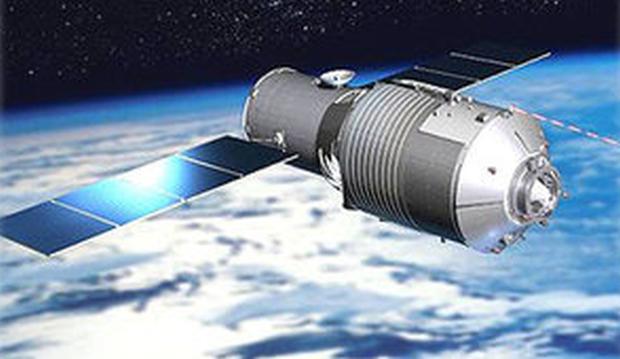ESA: Chinese space station to make ‘uncontrolled reentry’ early in 2018

China’s uncrewed Tiangong-1 space station. (Photo from the European Space Agency)
Tiangong-1, an uncrewed Chinese space station, is expected to reenter the atmosphere early in 2018 as it ends its operational life, according to a news release posted on Nov. 6 at the website of the European Space Agency (ESA).
ESA experts expect most of the craft to burn up. But as the ESA news release points out: “Owing to the station’s mass and construction materials, there is a possibility that some portions of it will survive and reach the surface.”
“In the history of spaceflight, no casualties due to falling space debris have ever been confirmed,” the ESA added.
“Owing to the geometry of the station’s orbit, we can already exclude the possibility that any fragments will fall over any spot further north than 43ºN or further south than 43ºS,” Holger Krag, head of ESA’s Space Debris Office, said.
“This means that reentry may take place over any spot on Earth between these latitudes, which includes several European countries, for example,” he added. “The date, time and geographic footprint of the reentry can only be predicted with large uncertainties. Even shortly before reentry, only a very large time and geographical window can be estimated.”
The ESA described the Tiangong-1 as 12 meters long with a diameter of 3.3 meters, with a launch mass of 8,506 kg.
“It has been unoccupied since 2013 and there has been no contact with it since 2016,” the ESA said.
At the moment, the space station is orbiting at altitude of about 300 km.
This orbit, according to the ESA, will decay sometime between January and March 2018, “when it will make an uncontrolled reentry.”
ESA said it would host a test campaign to follow the reentry, which will be conducted by the Inter Agency Space Debris Coordination Committee (IADC).
The ESA has hosted 20 previous IADC test campaigns since 1998.
IADC includes experts, particularly, on space debris from 13 space organisations, including NASA, ESA, European national space agencies, JAXA, ISRO, KARI, Roscosmos and the China National Space Administration.
“IADC members will use this event to conduct their annual reentry test campaign, during which participants will pool their predictions of the time window, as well as their respective tracking datasets obtained from radar and other sources,” the ESA said. “The aim is to cross-verify, cross-analyse and improve the prediction accuracy for all members.”
According to the news release, the Space Debris Office, which is based at the European Space Operations Center, Darmstadt, Germany, will conduct an international expert workshop in the week starting Feb. 28, 2018.
This workshop will focusing on reentry predictions and atmospheric break-up studies so that experts will be able share their latest findings and research in these and related topics.
“Separate from the IADC campaign, ESA will regularly update ESA Member State civil authorities with detailed information on the reentry, as it does during all such events,” the news release said. /atm